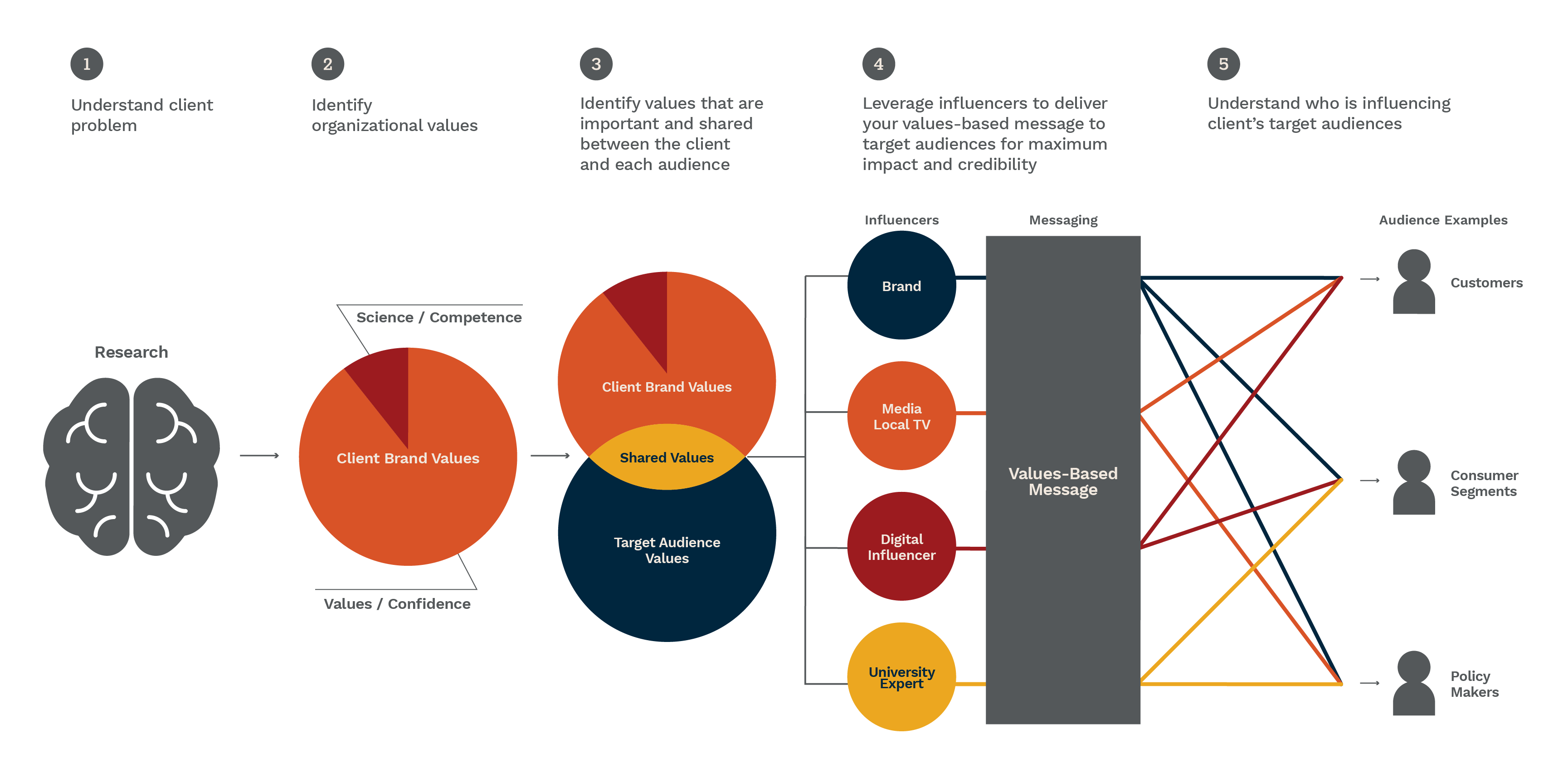The power of shared values
Shared Values | September 25, 2018
The Power of Shared Values
 Why did you choose the car you drive? How did you select the store where you shop, the news outlet you listen to or the community where you live? While several factors went into these decisions, in the end it came down to your values and what matters most to you.
Why did you choose the car you drive? How did you select the store where you shop, the news outlet you listen to or the community where you live? While several factors went into these decisions, in the end it came down to your values and what matters most to you.
For the food system, values are central to how food is grown, processed and consumed. But we often fail to recognize or communicate our values.
Those in food and agriculture have historically relied upon science when weighing decisions. It’s sound reasoning. Scientific analysis provides countless measurements from the rate of gain for a steer to the best temperature setting to ensure food safety to the optimum rate of fertilizer for growing a crop. Science is the currency of credibility in food and agriculture. But we’ve made the mistake of assuming this scientific credibility naturally translates to public trust.
While science is significant, it is not sufficient to build trust with those consumers who increasingly turn to social and digital sources of information. In this world, values (often expressed as emotion and opinion) carry more weight than objective fact. Today’s consumers follow sources of information that align with their values, which in turn confirm their existing biases. They often reject information, even if it is scientific consensus, that conflicts with their beliefs.
The challenge is how to connect with consumers who need more than scientific data to trust today’s food system. Research conducted on behalf of The Center for Food Integrity provides a good roadmap for navigating both science and values to build trust.
CFI’s research began by reviewing existing work on trust in food and agriculture in partnership with Steve Sapp of Iowa State University. The results revealed three primary drivers for trust in food and agriculture: influential others, competence and confidence.

Increasingly in our hyper-connected world, confidence and the perception of shared values is driven by transparency. Consumers hunger for information about their food – the farmer who grew it, the companies who process it, the stores that sell it and the restaurants that serve it. This knowledge empowers us to feel good about the choices we make about what we’re eating and feeding to our families. Consumers demand this higher level of transparency to evaluate if those who grow and process their food share their values and are trust-worthy.
I’ve found that transparency can either be terrifying or liberating; it all depends on your perspective. For the organization with their fingers crossed hoping that no one will figure out what’s really going on, the era of radical transparency will bring a rude awakening. Everyone carrying a cell phone is a reporter who can share their video at the speed of Twitter. Organizations, on the other hand, who are committed to greater transparency will be rewarded with increased trust, enhanced social license and freedom to operate.
As consumers have access to more information, one of two things will happen. Consumers will either develop a greater understanding that the company operates in a manner consistent with their values or they will discover practices that are fundamentally inconsistent with their values. The former leads to greater trust, the latter to rejection of practices, products and brands. In either case, transparency is what determines the alignment between consumer expectations and the companies they choose to support and the products they buy.
Interested in learning more about the power of shared values? Contact us for ideas on applying these strategies or check out the book, Size Matters: Why We Love to Hate Big Food, available on Amazon.